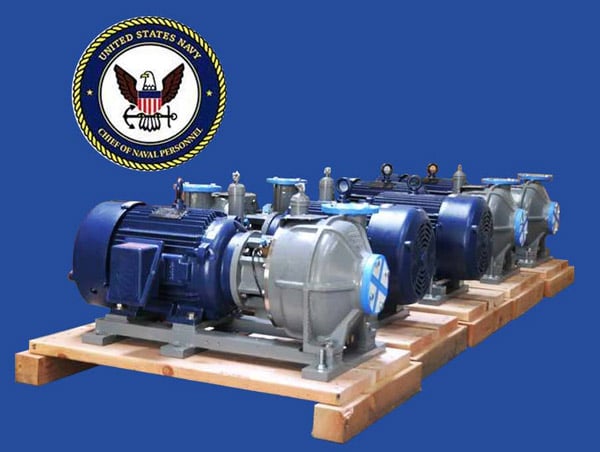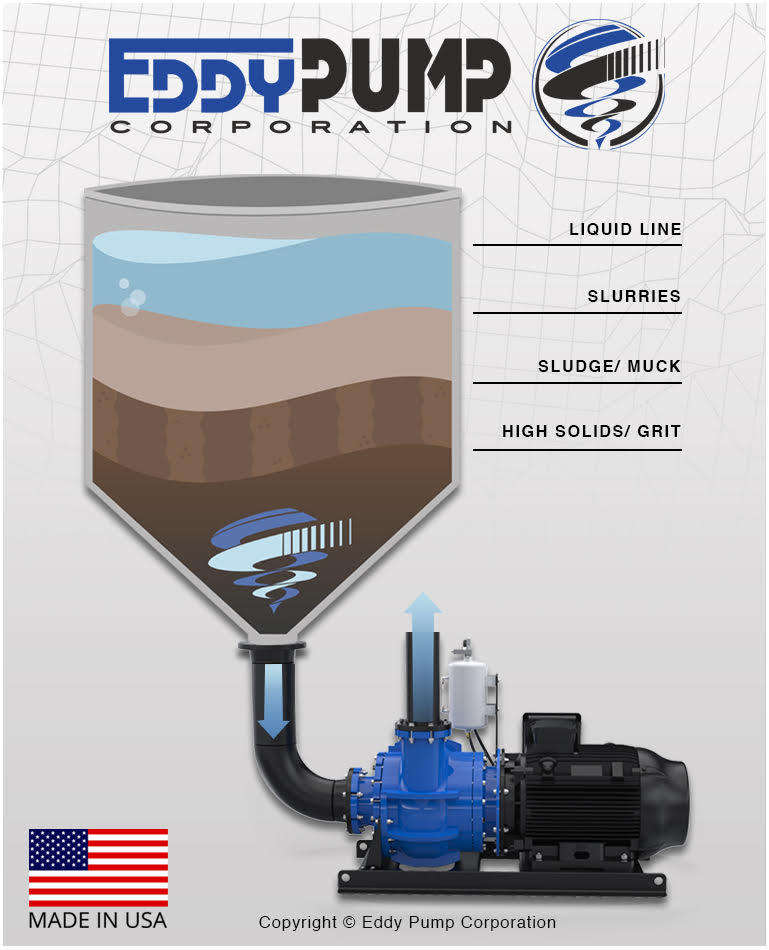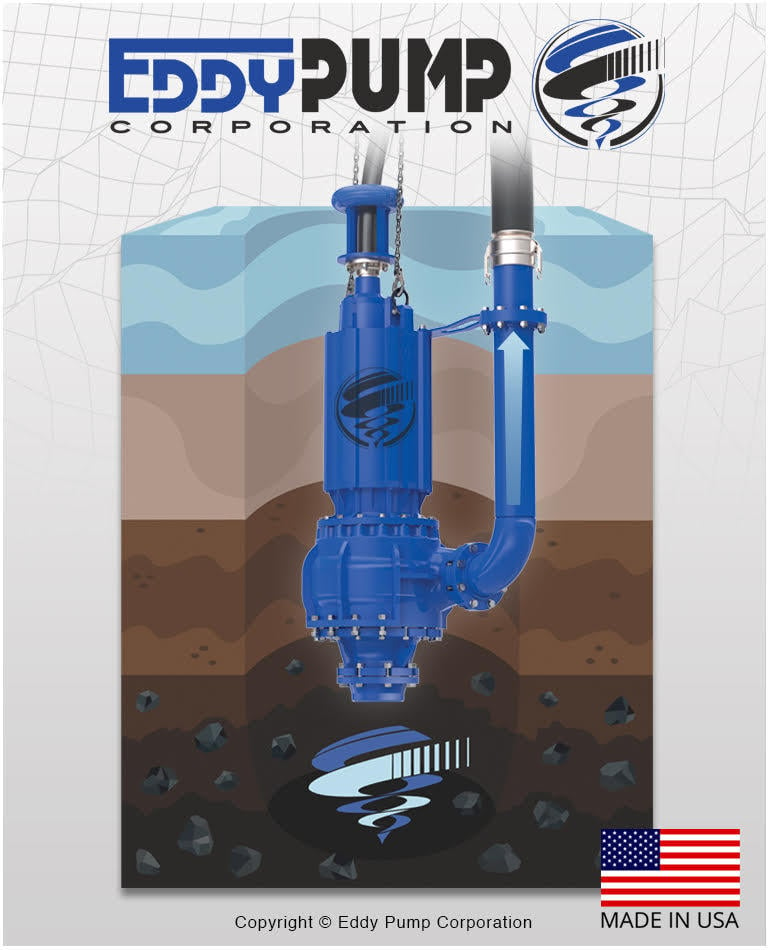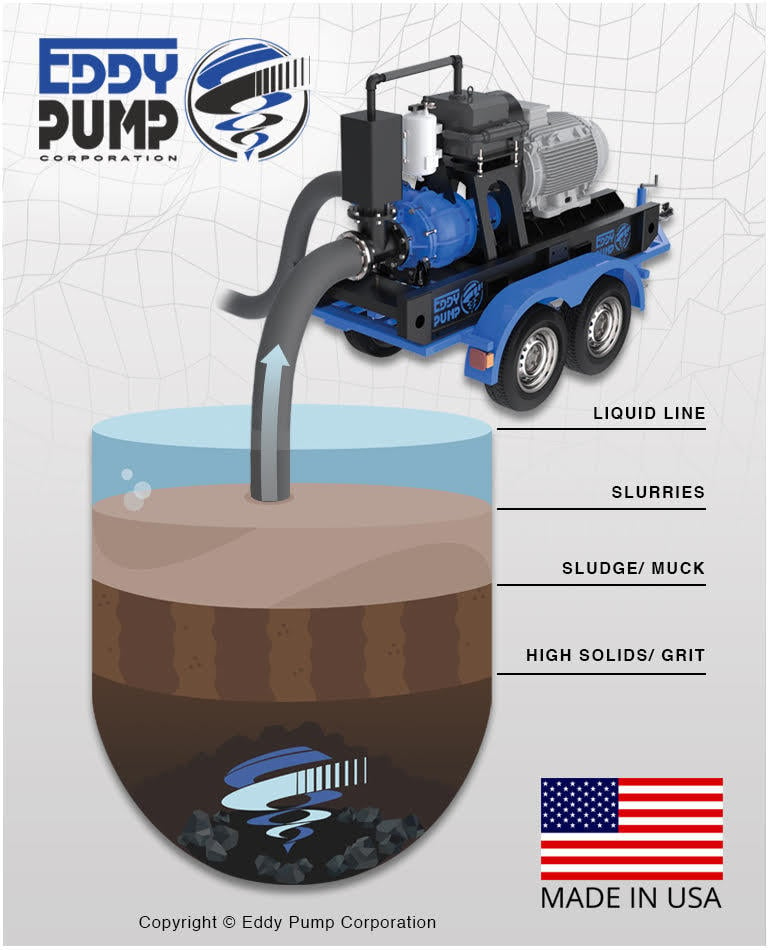Self-Priming Diesel Driven Pumps
Trailer, skid, or stationary mounted self-priming pump setup. Buy or Rent.
ANY PUMP CAN DELIVER
But Only the EDDY Pump Can Move Solids That Destroy All Other Pumps.
PUMP HIGHLY VISCOUS MATERIALS WITH LOW DOWNTIME
The diesel driven self-priming pump incorporates a vacuum-assisted priming unit with the pump. This fills the pump with slurry or target material, which allows the main EDDY Pump to work.
DRY PRIME CAPABILITY WITH UNIQUE SEAL SUPPORT SYSTEM
Most EDDY Pumps are submersible; however, with a self-priming unit, the pump and power unit are not submerged. The suction hose goes into the slurry, making the unit like a super-sized wet vacuum.
MAIN APPLICATIONS:
Mining, Sand/Agg, Sewage/Wastewater, Chemical, Irrigation, Sump Pit Cleanouts, Digester Tanks, Dewatering, and More!
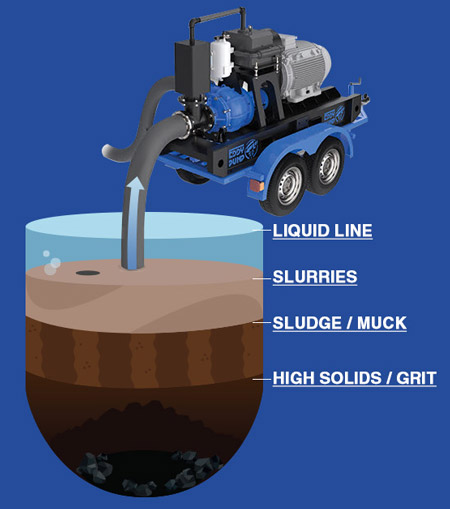
Self-Priming Diesel Pump Guide
Compare specifications
| Model | Size | Power | Volume | Head | PDF |
|---|---|---|---|---|---|
| 3-inches DSP/HD 3000 43-HP Self Priming Pump (Diesel) | 3-inch | 43 HP | 100 - 780 GPM | up to 130 ft | ENG |
| 4-inches DSP/HD 4000 43-HP Self Priming Pump (Diesel) | 4-inch | 43 HP | 250 - 1200 GPM | up to 200 ft | ENG |
| 4-inches DSP/HD 4000 115-HP Self Priming Pump (Diesel) | 4-inch | 115 HP | 250 - 1200 GPM | up to 200 ft | ENG |
| 6-inches DSP/HD 6000 115-HP Self Priming Pump (Diesel) | 6-inch | 115 HP | 450-2000 GPM | up to 200 ft | ENG |
| 6-inches DSP/HD 6000 173-HP Self Priming Pump (Diesel) | 6-inch | 173 HP | 450-2000 GPM | up to 200 ft | ENG |
| 8-inches DSP 8000 550-HP Self Priming Pump (Diesel) | 8-inch | 550 HP | 1600 - 5000 GPM | up to 240 ft | ENG |
| 10-Inch DSP 10000 550-HP Self Priming Pump (Diesel) | 10-inch | 550 HP | 1600 - 5000 GPM | up to 240 ft | ENG |
| 12-Inch DSP 12000 700-HP Self Priming Pump (Diesel) | 12-inch | 700 HP | 2600 - 7300 GPM | up to 180 ft | ENG |
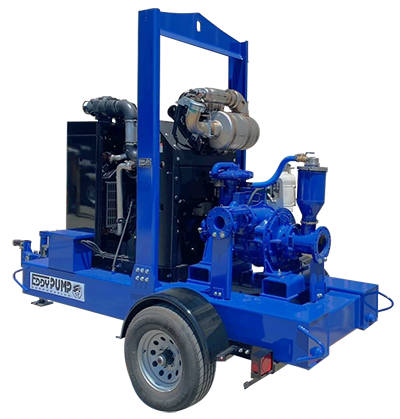
Self-Priming EDDY PUMP Advantages
- EDDY Power in a Self-Priming Package
- Secondary Vacuum Pump Allows Constant Priming
- Works Like a Giant Wet Vac
- Move 30-70% Solids
- Powered by Electric or Diesel
- Non-Clog, High Viscosity, High Specific Gravity,
High Abrasives, Low pH Pumping Design - Easily Process Rags, String, Rocks and Foreign Objects That Frequently Clog Other Pumps
- Multiple Mounting Options (Skid, Trailer, Stationary)
Why EDDY Pumps are better – highlights
This video shows how EDDY Pump beats out traditional centrifugal pumps regarding tough slurry and abrasive materials. EDDY Pump is at the heart of our featured dredge pump equipment, including the Remote Operated Subdredge, Diver Operated Pump, and the Excavator Attachment Dredge Pump. More Videos HERE.
EDDY PUMP FOR DEWATERING
This Video shows a smaller electric 3-Inch EDDY Self-Prime flowing at 400 GPM (2 cu yd) of slurry at distances of 400 ft in under a minute.
4-inch and 6-inch Diesel Trailer Units Are Most Popular
The core of this design is the patented EDDY Pump technology. The design redefines the pumping industry by being the only pump that utilizes the principles of a tornado to create a synchronized eddy current. This pump is not a centrifugal, positive displacement, or vortex pump but the most highly efficient high solids and high specific gravity pump on the market.
An ideal system for pumping the most viscous and heavy materials without clogging or having significant downtime. Lower downtime and maintenance issues versus conventional centrifugal or positive displacement pumps will save your project money. Pump size options range from the 2-inch slurry pump to a 12-inch option. Our system handles pumping distances over 3500 feet and production rates up to 4000 GPM.
Find Out What Makes The EDDY PUMP Superior
for Tough Dredge Projects
AVOID CLOGS
EDDY Pump has the tolerance to pump objects up to 12 inches to ensure maximum uptime and production rates.

SELF-PRIME FLEET RETROFITS
Get EDDY Pump Technology in a Diesel Self-Prime Format.
Boost your Solids Pumping Production!
Supercharge your Self-Prime Fleet. Upgrade your Self-Prime Diesel Pump OR Fleet for 3x Production Rates with this 2-hour retrofit.
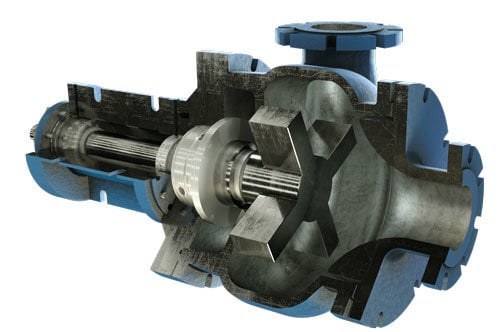
1. Remove Centrifugal Pump
2. Retrofit with EDDY Pump Wet End
3. 3x Production & Faster Job Completions
ALTERNATIVE DEPLOYMENT
SELF-PRIME EXCAVATOR CONFIGURATION

Self-Prime Recirculation Pump System
Keeping viscous slurries mixed helps prevent the settling of high solids sludge and slurries with low downtimes. Learn more…
HD (Heavy Duty) Slurry Pumps
HD (Heavy Duty) Slurry Pumps
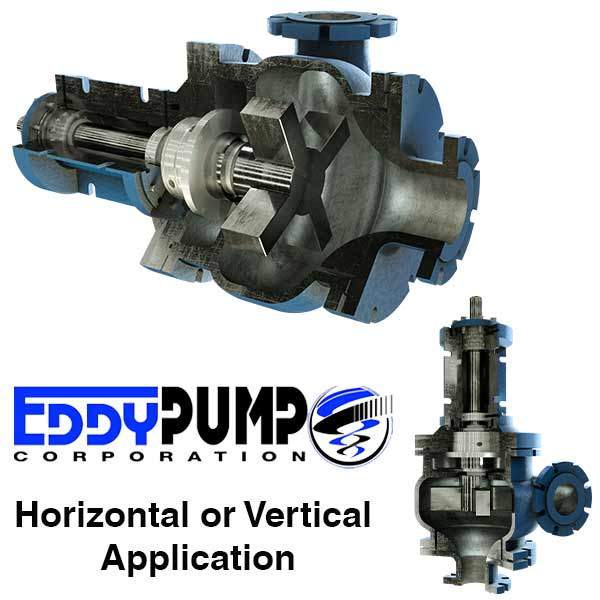
Dredge Pumps, Process, Slurry and Marine Pumps
And Dredging Equipment OEM
Why EDDY Pumps Are Better
How The EDDY Pump Works

We are a US dredge equipment and commercial slurry pump manufacturer. Only EDDY Pump equipment is sold here.
EDDY Pumps patented pump technology outperforms all centrifugal, vortex and positive displacement pumps in a variety of the most challenging pumping applications, especially pumping applications moving 40-70% solids. Our pump design allows for longer intervals between maintenance, which translates to increased output, uptime, and higher profits. Learn more about our products below, and pick a product line that fits your project needs.
Call us at 619-404-1916 if you need assistance.
Navy & Marine Pumps
CHT / BRINE / BILGE
& GRAYWATER SYSTEMS
OEM Sales, Service, and Overhaul.
EDDY Pump Marine Pumps for Brine, Sewage, Graywater, and CHT Systems. Custom Designed Pumping Systems for the US Navy, MSC, and commercial marine vessels. Vacuum Collection Holding Transfer Systems (VCHT), CHT, and Marine Pumps. Over 24 years of proven Naval and marine experience.
EDDY Pump Deployment Options
Flooded Suction Pumps
The fluid to be pumped with flooded suction pumps is positioned above the pump. With the pump positioned below, gravity can feed the fluid into the pump’s suction and keep the pump primed.
Submersible Pumps
Pumps that are completely submerged in the liquid are called submersible pumps. By being submerged in the fluid to be pumped, there is no need for priming the pump.
Self-Priming Pumps
With a self-priming unit, the pump and power unit are not submerged. The suction hose goes into the slurry and the unit acts like a super-sized wet dry vacuum. Can be trailer mounted for added mobility.
ALL OF OUR EQUIPMENT IS POWERED BY THE EDDY PUMP
One Pump for Process, Slurry, Sludge, Wastewater, and Dredging.

Get Expert Selection Help
Rent or Buy, Excavator Attachment Pumps and Slurry Pumps for Dredging.
Applications Include: Sand & Gravel, Mining, Commercial Food Processing, Sewage, Waste Water and Drilling Mud.
Frequently Asked Questions
What is a self-priming slurry pump?
A self-priming slurry pump is designed to handle slurries (mixtures of solids and liquids) and prime itself without external assistance. This means it can evacuate air from the suction line and begin pumping without the need for manual priming.
How does a self-priming slurry pump work?
Self-priming slurry pumps utilize a combination of centrifugal force and air/water separation to achieve self-priming. When the pump is started, the impeller rotates, creating a centrifugal force that pushes the slurry toward the discharge. Simultaneously, air present in the suction line is expelled through the discharge port, allowing the pump to prime itself.
What are the advantages of using a self-priming slurry pump?
The main advantages of self-priming slurry pumps include:
- Elimination of manual priming, reducing downtime and labor costs.
- It is versatile in applications, as it can handle slurries with high solid content without clogging.
- Ability to operate in environments where suction lift is required, such as dredging operations or pumping from pits and sumps.
What types of applications are self-priming slurry pumps suitable for?
Self-priming slurry pumps are ideal for a wide range of applications, including:
Dredging: Removing sediment, sand, and debris from bodies of water.
Mining: Transferring abrasive slurries containing minerals and ores.
Construction: Pumping slurry mixtures during tunnelling, excavation, and foundation work.
Industrial: Handling wastewater, sludge, and other challenging fluids in various industries.
Can self-priming slurry pumps handle abrasive materials?
Yes, self-priming slurry pumps are specifically designed to handle abrasive materials such as sand, gravel, and rocks. Their robust construction, including wear-resistant materials and heavy-duty components, allows them to withstand the erosive effects of abrasive slurries.
How do I determine the right size and type of self-priming slurry pump for my application?
Selecting the appropriate self-priming slurry pump involves considering factors such as the type and characteristics of the slurry, required flow rate, discharge pressure, and operating conditions. Consulting with a pump expert or utilizing sizing tools provided by manufacturers can help determine the most suitable pump for your specific application.
What maintenance is required for self-priming slurry pumps?
Routine maintenance for self-priming slurry pumps typically includes inspecting and replacing worn parts such as impellers, liners, and seals as needed. It’s also essential to monitor pump performance regularly, check for leaks, and lubricate moving parts according to the manufacturer’s recommendations. Regular maintenance helps ensure optimal pump performance and extends its service life.
Are self-priming slurry pumps environmentally friendly?
Self-priming slurry pumps can be designed and operated in an environmentally friendly manner by employing features such as efficient hydraulic designs, energy-saving motors, and using environmentally friendly lubricants. Additionally, proper maintenance and responsible disposal of any hazardous materials used in the pumping process contribute to minimizing environmental impact.
Can self-priming slurry pumps be customized for specific applications?
Yes, many manufacturers offer customization options for self-priming slurry pumps to meet the unique requirements of different applications. This may include modifications to construction materials, pump configuration, and accessories such as control panels, instrumentation, and specialized coatings for enhanced wear resistance. Discussing your specific needs with a pump supplier can help you tailor a solution to fit your application.
What are priming pumps used for?
Priming pumps are used to remove air or gas from the suction line of a pump, allowing it to effectively draw in and pump fluid. This process is essential for ensuring efficient operation, particularly in situations where the pump is located above the level of the fluid being pumped.
How does a self-priming pump work?
A self-priming pump utilizes a unique design that allows it to automatically prime itself without needing external priming assistance. This is achieved through a combination of air-water separation and centrifugal force, which expels air from the suction line and creates a vacuum to draw in fluid.
What are the advantages of self-priming pumps?
Self-priming pumps offer several advantages, including:
- Elimination of the need for manual priming, reducing downtime and labor costs.
- Versatility in application, as they can handle fluids with high gas content or intermittent flow conditions.
- Ease of installation and operation, particularly in remote or hard-to-reach locations.
- Enhanced reliability and efficiency compared to non-self-priming pumps.
Is a self-priming pump a centrifugal pump?
Yes, self-priming pumps are a type of centrifugal pump. They utilize centrifugal force generated by an impeller to impart kinetic energy to the fluid, creating pressure and facilitating pumping action.
What type of pump is self-priming?
Self-priming pumps can be classified as centrifugal pumps. However, they feature specialized designs and components that enable them to prime themselves automatically.
Where are self-priming pumps used?
Self-priming pumps are used in various applications across industries, including:
- Wastewater treatment
- Irrigation and agriculture
- Marine and offshore
- Construction and dewatering
- Industrial processes
- Mining and mineral processing
What are the parts of a self-priming pump?
The main components of a self-priming pump typically include:
Impeller: Rotating component that imparts kinetic energy to the fluid.
Casing: Enclosure that houses the impeller and volute, directing fluid flow.
Volute: Shaped chamber that converts kinetic energy into pressure.
Suction and discharge ports: Inlet and outlet connections for fluid entry and exit.
Priming chamber: Section of the pump where air-water separation occurs during priming.
Check valve: Prevents backflow of fluid into the suction line.
How many types of pump priming are there?
There are several types of pumps priming methods, including:
Manual priming: Using external means such as a hand pump or vacuum removes air from the suction line.
Automatic priming: Utilizing built-in mechanisms within the pump to expel air and prime itself automatically.
Continuous priming: Maintaining a primed state during operation, ensuring uninterrupted pumping.
Do all pumps need priming?
No, not all pumps require priming. Some pumps, such as submersible or positive displacement pumps, operate below the fluid level and do not require priming. However, priming is necessary to initiate pumping action effectively for pumps located above the fluid level or in situations where air may enter the suction line.





